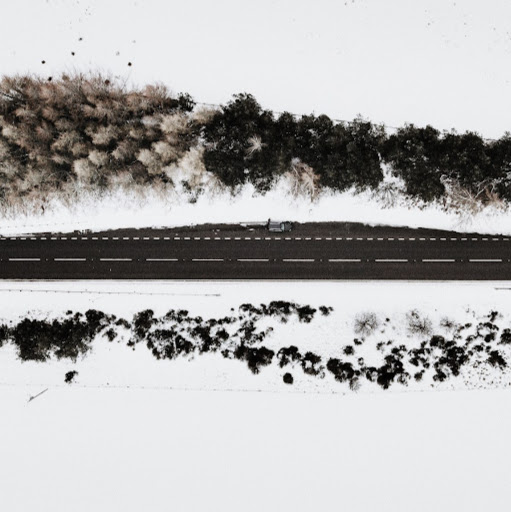Susan Chen
age ~63
from Cupertino, CA
- Also known as:
-
- Susan C Lin
- Shwu Shyen Chen
- N Chen
Susan Chen Phones & Addresses
- Cupertino, CA
- Sunnyvale, CA
- Los Altos, CA
- Santa Clara, CA
Medicine Doctors

Dr. Susan S Chen, Fremont CA - DDS (Doctor of Dental Surgery)
view sourceSpecialties:
Dentistry
Address:
39200 Liberty St Suite A, Fremont, CA 94538
5107911970 (Phone), 5107910489 (Fax)
5107911970 (Phone), 5107910489 (Fax)
Languages:
English
Chinese
Chinese

Susan Suehui Chen, Fremont CA
view sourceSpecialties:
Dentist
Address:
39200 Liberty St, Fremont, CA 94538
Us Patents
-
Cu-A1 Combined Interconnect System
view source -
US Patent:6346745, Feb 12, 2002
-
Filed:Dec 4, 1998
-
Appl. No.:09/205587
-
Inventors:Takeshi Nogami - Sunnyvale CA
Susan H. Chen - Santa Clara CA -
Assignee:Advanced Micro Devices, Inc. - Sunnyvale CA
-
International Classification:H01L 2348
-
US Classification:257751, 257762, 257765
-
Abstract:A combined interconnect system is formed comprising a Cu or Cu alloy feature electrically connected an Al or Al alloy feature through a composite comprising a first layer containing tantalum and aluminum contacting the Al or Al alloy feature, a second layer containing tantalum nitride, a third layer containing tantalum nitride having an nitrogen content less than that of the second layer, e. g. amorphous tantalum nitride, and a fourth layer comprising tantalum or tantalum nitride having a nitrogen content less than that of the third layer. Embodiments include forming a dual damascene opening in the dielectric layer exposing a lower Al or Al alloy feature, depositing a layer of tantalum in contact with the Al or Al alloy feature, sequentially depositing the second, third and fourth layers, filling the opening with Cu or Cu alloy layer, CMP and heating to diffuse aluminum from the underlying feature into the first tantalum layer.
-
Semiconductor Device And Method Of Manufacturing Without Damaging Hsq Layer And Metal Pattern
view source -
US Patent:6355575, Mar 12, 2002
-
Filed:May 22, 2000
-
Appl. No.:09/575463
-
Inventors:Fei Wang - San Jose CA
Simon S. Chan - Saratoga CA
Susan Chen - Santa Clara CA -
Assignee:Advanced Micro Devices, Inc. - Sunnyvale CA
-
International Classification:H01L 21302
-
US Classification:438712
-
Abstract:HSQ is employed as a dielectric layer in manufacturing a high density, multi-metal layer semiconductor device. The degradation of deposited HSQ layers during formation of the semiconductor device, as from photoresist stripping using an O -containing plasma, is avoided by forming first and second dielectric layers on the HSQ layer, forming a photoresist mask on the second dielectric layer and etching to form an opening in the second dielectric layer leaving the first dielectric layer exposed. The first dielectric layer protects the HSQ from degradation during subsequent stripping.
-
Post-Spacer Etch Surface Treatment For Improved Silicide Formation
view source -
US Patent:6368949, Apr 9, 2002
-
Filed:Sep 21, 2000
-
Appl. No.:09/666342
-
Inventors:Susan H. Chen - Santa Clara CA
Simon S. Chan - Saratoga CA -
Assignee:Advanced Micro Devices, Inc. - Sunnyvale CA
-
International Classification:H01L 213205
-
US Classification:438592, 438774
-
Abstract:Sub-micron dimensioned, ultra-shallow junction MOS and/or CMOS transistor devices have been reduced or a minimal junction leakage are formed by a salicide process wherein carbonaceous residue on silicon substrate surfaces resulting from reactive plasma etching for sidewall spacer formation is removed prior to salicide processing. Embodiments include forming a sacrificial oxide and removing the sacrificial oxide to remove the carbonaceous residues and anneal out damage to the silicon substrate. Subsequently formed silicide regions on the source and drain regions have improved quality.
-
Anti-Reflective Coating Used In The Fabrication Of Microcircuit Structures In 0.18 Micron And Smaller Technologies
view source -
US Patent:6383947, May 7, 2002
-
Filed:Oct 31, 2000
-
Appl. No.:09/703513
-
Inventors:Paul R. Besser - Sunnyvale CA
Bhanwar Singh - Morgan Hill CA
Darrell M. Erb - Los Altos CA
Susan H. Chen - Santa Clara CA
Carmen Morales - S.J. CA -
Assignee:Advanced Micro Devices, Inc. - Sunnyvale CA
-
International Classification:H01L 2131
-
US Classification:438758, 438636, 438700, 43271, 43317, 257659, 257751
-
Abstract:An anti-reflective coating for use in microcircuit fabrication and specifically using ultraviolet photolithographic processes. A three-layered anti-reflective coating is used to enhance metallization etching in the construction of microcircuits. The coating features a titanium nitride anti-reflective layer sandwiched between two titanium metal layers. The upper titanium layer protects subsequently applied deep ultraviolet photoresists from the deleterious effects of the titanium nitride anti-reflective layer. The unique character of the three layer anti-reflective coating allows the use of an efficient single chamber fabrication process to form the three-layer coating.
-
Method Of Selectively Controlling Contact Resistance By Controlling Impurity Concentration And Silicide Thickness
view source -
US Patent:6391750, May 21, 2002
-
Filed:Aug 17, 2000
-
Appl. No.:09/639799
-
Inventors:Susan H. Chen - Santa Clara CA
Paul R. Besser - Sunnyvale CA -
Assignee:Advanced Micro Devices, Inc. - Sunnyvale CA
-
International Classification:H01L 2128
-
US Classification:438583, 438674
-
Abstract:Methods are provided that selectively provide various contact resistances based on each individual transistors influence on an overall chip speed during the formation of active regions and silicide layers. In order to provide lower contact resistance to devices which have a critical influence on overall device speed, the active regions of such critical devices are formed with a lower impurity concentration and thicker silicide layers are provided on the active regions. Likewise, for the normal devices which have less or no influence on overall chip speed, thinner silicide layers are provided on the active regions having a higher impurity concentration than the critical devices.
-
Sidewall Spacer Etch Process For Improved Silicide Formation
view source -
US Patent:6461923, Oct 8, 2002
-
Filed:Aug 17, 2000
-
Appl. No.:09/639816
-
Inventors:Angela T. Hui - Fremont CA
Paul R. Besser - Austin TX
Susan H. Chen - Santa Clara CA -
Assignee:Advanced Micro Devices, Inc. - Sunnyvale CA
-
International Classification:H01L 21336
-
US Classification:438305, 438586, 438680
-
Abstract:Sub-micron dimensioned, ultra-shallow junction MOS and/or CMOS transistor devices having reduced or minimal junction leakage are formed by a salicide process wherein silicon substrate surfaces intended to be subjected to ion implantation for source/drain formation are protected from damage resulting from reactive plasma etching of a blanket insulative layer for sidewall spacer formation by leaving a residual thickness of the insulative layer thereon. The residual layer is retained during ion implantation and removed prior to salicide processing to provide an undamaged surface for optimal contact formation thereon. Embodiments include anisotropically plasma etching a major amount of the thickness of the blanket insulative layer during a preselected interval for sidewall spacer formation and removing the residual thickness thereof after source/drain implantation by etching with dilute aqueous HF.
-
Reverse Mask And Nitride Layer Deposition For Reduction Of Vertical Capacitance Variation In Multi-Layer Metallization Systems
view source -
US Patent:6511904, Jan 28, 2003
-
Filed:Aug 17, 2000
-
Appl. No.:09/639813
-
Inventors:Susan H. Chen - Santa Clara CA
Paul R. Besser - Austin TX -
Assignee:Advanced Micro Devices, Inc. - Sunnyvale CA
-
International Classification:H01L 2144
-
US Classification:438626, 438618, 438623, 438735
-
Abstract:Excessive variation in vertical (i. e. , inter-level) capacitance of multi-level metallization semiconductor devices resulting in poor RC time constants of finished devices, and over-etching of borderless vias leading to inter-level short-circuits, are simultaneously eliminated or substantially reduced by selectively providing an etch-resistant masking material at thinner, i. e. , recessed, portions of a first, low k gap fill material blanket-deposited over spaced-apart features of a metallization pattern and in the spaces therebetween. The surfaces of thicker, non-recessed portions thereof are etched so as to be substantially co-planar with the feature surfaces and the recessed portions. The etch-resistant mask is then removed, and second and third dielectric layers deposited over the planarized surface. The second and third dielectric layers are selected such that the second dielectric layer etches at a substantially slower rate than the third dielectric layer, thereby serving as a partial etch stop layer preventing deleterious over-etching of the borderless via.
-
Reverse Mask And Oxide Layer Deposition For Reduction Of Vertical Capacitance Variation In Multi-Layer Metallization Systems
view source -
US Patent:6660618, Dec 9, 2003
-
Filed:Aug 17, 2000
-
Appl. No.:09/640080
-
Inventors:Susan H. Chen - Santa Clara CA
Paul R. Besser - Austin TX -
Assignee:Advanced Micro Devices, Inc. - Sunnyvale CA
-
International Classification:H01L 2120
-
US Classification:438584, 438622, 438645, 438699
-
Abstract:Excessive variation in vertical (i. e. , inter-level) capacitance of multi-level metallization semiconductor devices resulting in racing of clock skew circuitry of finished devices, and over-etching of borderless vias leading to inter-level short-circuits, are simultaneously eliminated, or substantially reduced, by selectively providing an etch-resistant masking material at thinner, i. e. , recessed, portions of a first, low k gap fill material blanket-deposited over spaced-apart features of a metallization pattern and in the spaces therebetween. The surfaces of thicker, non-recessed portions thereof are etched so as to be substantially co-planar with the feature surfaces and the recessed portions. The etch-resistant mask is then removed, and second, oxide-based and third, low k dielectric layers deposited over the planarized surface. The second and third dielectric layers are selected such that the second dielectric layer etches at a substantially slower rate than the third dielectric layer and thus serves as a partial etch stop layer, thereby preventing deleterious over-etching of the borderless via.
Name / Title
Company / Classification
Phones & Addresses
39200 Liberty St STE A, Fremont, CA 94538
Vp Of Sales
Susan Chen
Surveying Services
Surveying Services
5636 California St. Apt. 7 - San Francisco, San Francisco, CA 94120
Owner
Susan's Dance Studio
Dance Studio/School/Hall
Dance Studio/School/Hall
2146 Ringwood Ave, San Jose, CA 95131
4084351889
4084351889
Principal
Sc Design Group
Business Services
Business Services
20910 Pepper Tree Ln, Cupertino, CA 95014
incorporator
Motorsport Freaks, Inc
MOTORCYCLE PARTS DEALER (E-COMMERCE)
MOTORCYCLE PARTS DEALER (E-COMMERCE)
Family And General Dentistry
Susan Chen Sh DDS
Dentist's Office
Dentist's Office
39200 Liberty St, Fremont, CA 94538
Managing Director
The University of Texas Investment Management Company
39200 Liberty St STE A, Fremont, CA 94538
Resumes

Susan Chen Saratoga, CA
view sourceWork:
The Gymboree Corporation
Nov 2011 to 2000
Allocation Analyst, Allocation and Planning Department IvyTutor Center
Sep 2011 to 2000
SAT Instructor Liberty Mutual Insurance Group
Boston, MA
Jun 2009 to Aug 2009
Product Management Intern, Auto Insurance and Specialty Lines Insurance Products Target Corporation
Minneapolis, MN
Jun 2008 to Aug 2008
Business Analyst Intern, Merchandising Process and Systems Development
Nov 2011 to 2000
Allocation Analyst, Allocation and Planning Department IvyTutor Center
Sep 2011 to 2000
SAT Instructor Liberty Mutual Insurance Group
Boston, MA
Jun 2009 to Aug 2009
Product Management Intern, Auto Insurance and Specialty Lines Insurance Products Target Corporation
Minneapolis, MN
Jun 2008 to Aug 2008
Business Analyst Intern, Merchandising Process and Systems Development
Education:
DUKE UNIVERSITY
Durham, NC
Aug 2010 to May 2011
Graduate Certificate in Public Policy Studies STANFORD UNIVERSITY
Stanford, CA
2006 to 2010
Bachelor of Arts in International Relations and Asian American Studies PEKING UNIVERSITY
2008
Econometrics
Durham, NC
Aug 2010 to May 2011
Graduate Certificate in Public Policy Studies STANFORD UNIVERSITY
Stanford, CA
2006 to 2010
Bachelor of Arts in International Relations and Asian American Studies PEKING UNIVERSITY
2008
Econometrics
Skills:
SQL, Tableau, Excel, PowerPoint, HTML, Matlab, R, STATA, SPSS, Microstrategy, JDA, Business Objects, ETL Tools, A/B Testing, Photoshop, Visio
License Records
Susan Chen
License #:
6220-S - Active
Issued Date:
May 30, 2012
Expiration Date:
Aug 31, 2017
Type:
Licensed Social Worker
License #:
IC-736 - Expired
Issued Date:
Jul 31, 2012
Isbn (Books And Publications)


Susan Chen
view source
Susan Chen Mei Ling
view source
Susan Chen
view source
Susan Zhu Chen
view source
Susan Chen
view source
Susan Chen
view source
SuSan Chen
view source
Susan Chen Kawasaki
view sourceYoutube
Plaxo

Susan Chen
view source
susan chen
view sourcemarketamerica unfranchise

Susan Chen
view sourceDenny's International

susan chen
view sourceChinese Christian Schools

Susan Chen
view sourceTainan, Taiwan
Classmates

Susan Chen
view sourceSchools:
eastside hish school Greenville SC 1981-1985
Community:
Robert Kinder, Vint Hargrave

Susan Chen
view sourceSchools:
Dalat High School Penang IN 1996-2002
Community:
Christine Schilling

Susan Chen (Stevenson)
view sourceSchools:
Canyon High School Anaheim CA 1971-1975
Community:
Stephen Hogie, Mike Maxam, Rory Moore

Susan Chen (Syring)
view sourceSchools:
Everest High School Schofield WI 1970-1974
Community:
Ann Bowen, Lori Scheel

Susan Chen
view sourceSchools:
Charlestown High School Boston MA 2000-2001
Community:
Maureen Ahern

Susan Chen
view sourceSchools:
Dalat High School Penang IN 1996-2002
Community:
Christine Schilling

Susan Chen
view sourceSchools:
Dalat High School Penang IN 1998-2002
Community:
Christine Schilling

Susan Chen
view sourceSchools:
Easton High School Easton MO 2008-2012
Community:
David Mitchell, George Pace, Andrew Peter, Jim Barton, David Birdsell, Ralph Herpel, Joann Kneib, Kay Bird, Carl Edwards, Patrick Chambers, Helen Byrnes, Rita Rhoad
Myspace
Flickr
Googleplus

Susan Chen
Work:
Propulsion Labs - Technical Project Manager (2011)
Education:
Plano East Senior High School, University of Texas at Dallas, University of Texas at Arlington - Information Systems

Susan Chen
Work:
Starbucks - Barista
Education:
University of Maryland, College Park

Susan Chen
Education:
Montclair State University - International Business / Marketing
Tagline:
Live the life you love, so you can love the life you live.

Susan Chen
Education:
Stanford University, Duke University
Tagline:
I am East and West, East Coast and West Coast.
Bragging Rights:
Aristotelian by day. Platonist by night.

Susan Chen
Education:
Cornell University
About:
F☺☺d

Susan Chen
Work:
S.A.C. Interiors
About:
Full Service Interior Design Firm.

Susan Chen
Work:
S.A.C. Properties & S.A.C. Interiors, LTD
About:
My name is Susan A Chen an I'm CEO of an Interior Design company S.A.C. Interiors and a Full Service Real Estate Firm S.A.C. Properties.

Susan Chen
Relationship:
Single
Get Report for Susan Chen from Cupertino, CA, age ~63
















